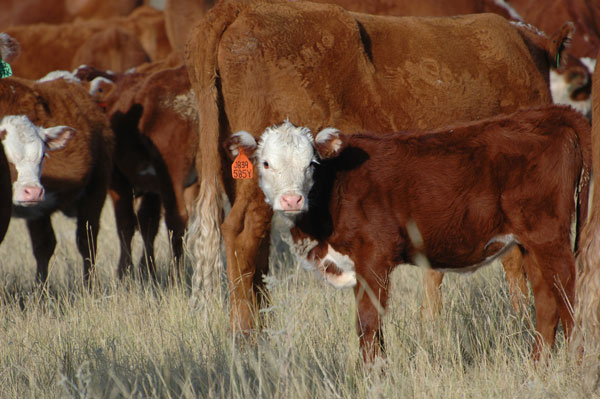Ranching for profit in the future may require a different way of looking at how you ranch.
August 27, 2020

Last month I wrote about the “Ranch of the future,” showing how there are many types and sizes of ranches and describing a few trends that I have observed and think will continue into the future. Now I want to provide my thoughts concerning the “profitable” ranch of the future.
For the small ranches that exist because the owners want to own a piece of farmland or have a few cows or want to enjoy working and playing outdoors with the land and the livestock, I suggest they are profitable if they do not take family living money or non-farm income to support the farm.
It’s reasonable to not pay yourself for labor because that is part of your recreation or quality of life. It’s also reasonable to use the ranch pickup to drive to the day job. These ranches will continue to exist and make a small profit as long as they trade their labor for fun and the use of the ranch pickup to get to the day job and use good management practices.
For the small operator who wants to grow and become a full-time operator, it is forgivable to use off-farm family income to expand, but not to operate. The ranch operation should pay its own way. And family income from other sources should only be used when the family has a reasonable standard of living.
When using non-farm income to expand the operation, it is very important to ensure that it is used only for expansion and that the operation can carry itself. If it can’t, you will have made a bad investment.
For the full-time rancher, you may have a chance to be profitable using traditional or conventional methods if you have very little or no debt and are located in a very favorable location that doesn’t require much cost. This usually means extremely low overheads—buildings, facilities, equipment and labor—and not having to put up or feed much hay. However, most aren’t that blessed and will have to make more than a few changes to be a “profitable ranch of the future.”
Since the price of what we ranchers produce has not risen as fast as the price we pay for equipment, fuel and labor, we have no choice but to become significantly less dependent on equipment, fuel and labor. We must devise operating approaches that are much more dependent on rainfall, sunlight, soil and our ingenuity and growing knowledge base
This leads to two huge changes for most ranchers.
1) Reduce operational overheads as much as possible—just get rid of everything you don’t absolutely need. I know; you “need almost all of it.” However, you’ll find life is easier and the ranch more profitable when you don’t have so much “stuff.”
2) Put new emphasis on soil health by improving grazing management which can either build or destroy soil health. I know; you don’t want to do all that fencing, and it will require some stock water development, too.
I can tell you the fence isn’t as difficult as you assume; and life (work load and time commitment) gets much easier once the fence and water are in place. The “learning” is the hard part; and sometimes we ranchers just don’t want to work that hard—at learning.
Let’s dig deeper on these two important steps:
First, cutting overheads. This can be emotionally difficult until you recognize the freedom that comes with being rid of stuff. You also begin to see the cost savings.
For 20 years I managed several ranches in the U.S. and Canada. Only one had any haying equipment. Hay was either purchased or put up by a contractor. All but one of the ranches were north of I-80, but each operating team began to think of ways to reduce the need for hay and to graze hay fields (yes, graze instead of hay).
Think of that: reducing the number of days feeding hay and increasing the number of days grazing. That can be a big economic change.
Second, soil health. This is where the most economic difference can be made. However, the principles of soil health along with eco-system processes must be understood and imprinted on our brains.
Why? Because the practices that we each adopt must be based on principles, must address their effect on eco-system functions and must fit our operation—location, climate, our stage of development, etc.
You can learn a lot from someone you know who is grazing well; but I would suggest a good grazing or soil health school to ensure that you really learn the “principles.” Your new practices will only be right if they are built on sound principles.
As soil health begins to improve, a plethora of compounding and cascading beneficial effects will also begin—all as a result of changes we initiate in our management of the soil surface. Every action that we, through our animals or farming methods, place on the soil surface will have a positive or negative effect, never neutral. Let’s make sure they are positive; and great things can happen.
Finally, a better cow is also required. You must have a cowherd adapted to your “new” management and the rigors of your unique environment. When we ask cows to graze more and get by on fewer expensive inputs, many will not acclimate to the new environment. Your culling and selection will probably need to change, but profitability always trumps bragging rights (“I weaned the biggest calves”).
Teichert, a consultant on strategic planning for ranches, retired in 2010 as vice president and general manager of AgReserves, Inc. He resides in Orem, Utah. Contact him at [email protected]. The opinions of the author are not necessarily those of beefmagazine.com or Farm Progress.
About the Author(s)
You May Also Like



